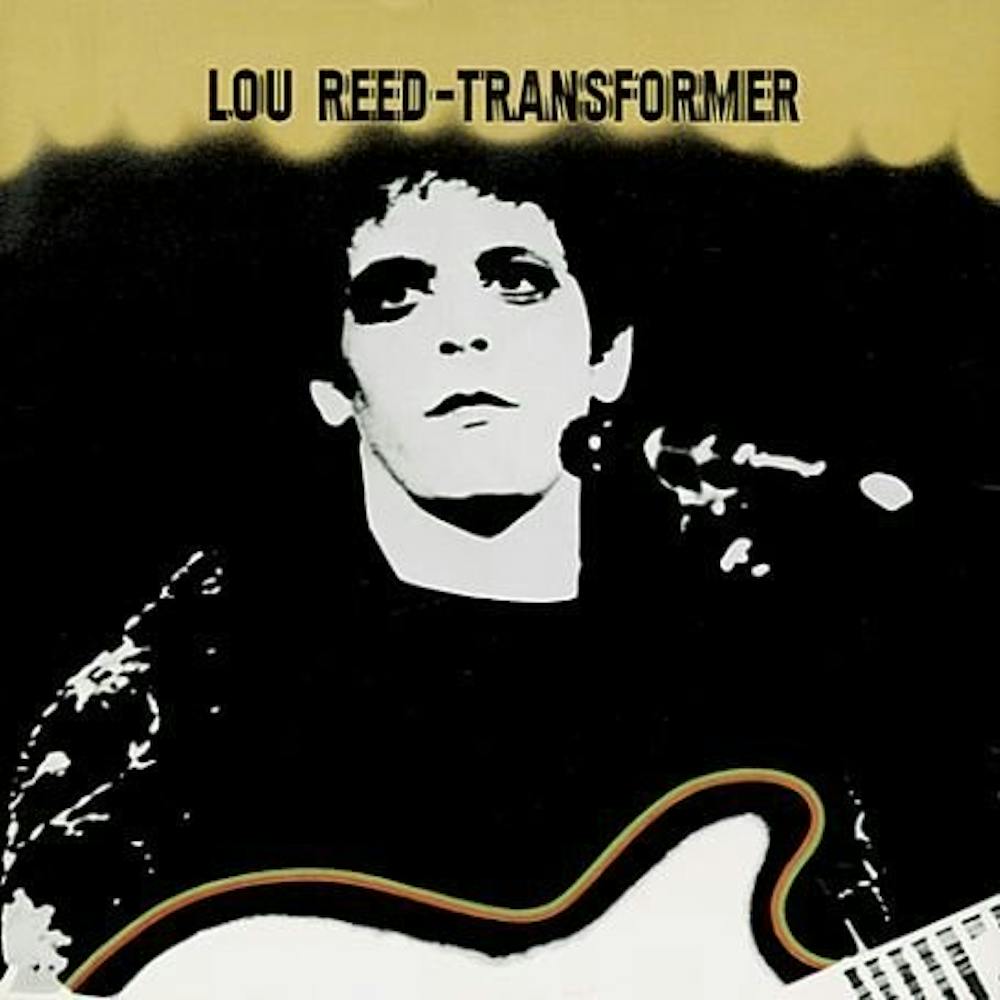A visionary, an artist, a poet: the legendary rocker’s legacy remains. Known for his twisted tales about vibrant cities and their wild outcasts, Lou Reed was born in Brooklyn and passed away in Long Island. His musical history, defined by poetic lyricism and dark grungy tunes, consists mainly of his leadership in The Velvet Underground and his solo career post–1972. During his early years, the notorious guitarist was known to follow the chaotic, out–of–control urban scene of the ‘60s. However, during his late years, he led a more tranquil lifestyle, replacing drugs with tai chi and rowdy Chelsea girls with his wife, Laurie Anderson. Yet throughout his career, he remained anything but average as he continually pursued the spirit of rock ‘n’ roll. As a person, he was quite the contradictory character and fostered an interesting, albeit troubling past. As an artist, he was definitely ahead of his time, as he collaborated closely with artists such as Andy Warhol and mixed rock with avant–garde experiments, art and literature. In the ‘60s, Lou Reed was somewhat of a New York myth—the one who captured an extraordinary moment in time. As producer Tony Visconti told Rolling Stone, Reed was “the quintessential New York. He took advantage of everything. He was everywhere. Everywhere.”
To honor the fallen star, here are some highlights of Reed’s iconic career, in chronological order.
“I’m Waiting For The Man” – “The Velvet Underground & Nico” (1967)
It’s impossible to imagine the influential rocker without his pre–1972 contributions to New York City’s dirty and gritty rock ‘n’ roll scene. It’s 1967, and this song depicts a man who ventures uptown to buy $26 worth of heroin. Stuck on Lexington Avenue, the addict has no choice but to wait for “The Man” and his subsequent rush.
“Sunday Morning” – “The Velvet Underground & Nico” (1967)
The Velvet Underground’s unconventional lyrics complement the scene of the turbulent ‘60s: Lou Reed meets Andy Warhol’s avant–garde factory. Picture Reed and German back–up singer/model Nico, all dressed in black at Warhol’s request as he projects images onto them, part of his experimental project Exploding Plastic Inevitable.
“Heroin” – “The Velvet Underground & Nico” (1967)
Part of a three–song set alongside “I’m Waiting For The Man,” this song troubles and enchants listeners. The hypnotic melody echoes the addicting effects of the drug. A song about isolation and introspection, Reed sings about dependency and the freedom of a man who turns to his veins for solace. As the song nears its end, the background noises become louder and more disturbing—musical chaos accompanies the highly anticipated rush.
“Pale Blue Eyes” – “The Velvet Underground” (1969)
It comes as no surprise that this song tastes bittersweet, as it is dedicated to Reed’s unattainable first love (she was married). It is quite different than most Velvet Underground songs, but that is why it is so powerful. The ballad exposes a new high, not the one attained by heroin, and a new “peak,” the one of lust. A slow song, “Pale Blue Eyes” is not a story about waiting, but about longing.
“Sweet Jane” – “Loaded” (1970)
By the time this four–chord classic came out, the Velvet Underground was falling apart, and Reed was on his way to perform solo. The band’s songs weren’t commercial or critical successes—and yet this song remains as one of the classics. The meaning remains ambiguous… Is the song a tale told by a rocker about two ordinary characters and lovers? Does it uncover society’s expectations? Or is it yet another allusion to drugs?
“Perfect Day” – “Transformer” (1972)
Produced by David Bowie, “Transformer” was not Reed’s first solo album, but it was definitely the one with the most hits. Piano–based, this song is quite mellow, almost calming. At first, the lyrics seem simple. And yet, they then evoke confusion: “Oh, such a perfect day/You just keep me hanging on/You’re going to reap just what you sow.”
“Walk on the Wild Side” – “Transformer” (1972)
If there is one song that successfully captures the essence of the ‘70s on the Lower East Side, it is this one. The era is all about decadence—and this masterpiece exposes it all: the drugs, the prostitution, the backroom oral sex… the debauchery. The signature song was Reed’s only pop radio hit, despite the fact that it opened the dialogue about the misfits and the hustlers. Regardless, the song will last for decades.
“Caroline Says II” – “Berlin” (1973)
This song, a remake of the Velvet Underground’s “Stephanie Says,” perfectly embodies “Berlin,” a concept album about two ill–fated junkies in love. Familiar dark themes follow Reed to Berlin, as Caroline and John are a couple plagued by abuse and addiction.
“Nobody But You” – “Songs for Drella” (1990)
Following Warhol’s unexpected death in 1987, former Velvet Underground musician John Cale partnered with Reed to create an album dedicated to their old friend and patron. Even though they disagreed in the last few years of the VU, they emerge victorious as the album is both edgy and the subject, Warhol, is timeless. Perhaps not the most classic songs, but songs that, if put in the right context, perfectly represent a slice of an important era.
“Vanishing Act” – “The Raven” (2003)
One of Reed’s last albums, “The Raven” shows the public how Reed was not only a rock star but a poet as well. Influenced by Edgar Allen Poe’s poetry, the album mixes lyrics and verses read by various artists (including Laurie Anderson, who Reed married in 2008). Perhaps the songs were not the most successful, but they were definitely indicative of Reed’s talent and innovative mixture of different artistic genres. Alas, the sorrowful and ambiguous song leaves us with Reed’s desire to “disappear, float into a mist.”
See you on the wild side, Lou.







